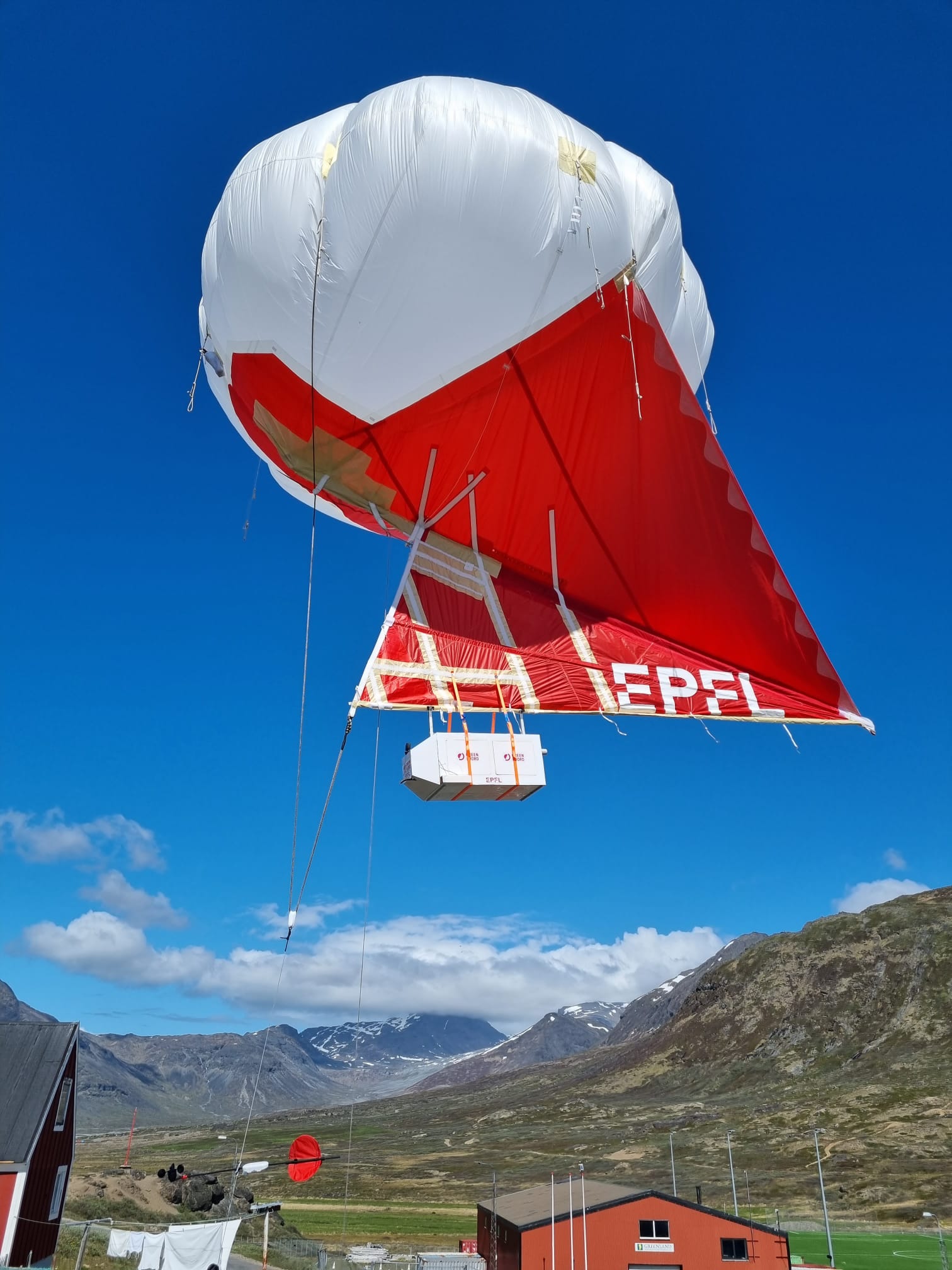Global warming induces emissions changes in southern Greenlandic fjord systems, for example from marine algal blooms, emerging terrestrial vegetation, increasing glacial dust or fires. At the same time human activities in the area cause emissions from traffic, domestic activities and in particular animal herding. All these emissions change the composition of the atmosphere, specifically also the number of cloud-forming particles (cloud condensation and ice nucleating particles), which in turn affect cloud formation. Clouds are important elements of fjord systems because they modulate the surface radiation balance and precipitation, which are critical to the evolution of the Greenlandic ice sheet in the region. We will place a series of atmospheric instruments measuring trace gases and aerosol particles on the ground.
Because fjord systems have a complex topography, and because the surface is sometimes colder than air further aloft due to the cold ice on the fjords and snow cover, it is not enough to measure the atmospheric composition near the ground. Air near the surface is not well-mixed with air at cloud forming level. This motivates the deployment of a tethered balloon system, a helikite, which allows us to measure vertical profiles of atmospheric composition and cloud forming particles.
We work closely together with the biodiversity cluster to understand the biological signature and their origin in the atmosphere, because biological particles are thought to be good ice nucleating particles. Similarly, dust plays an important role, hence we co-investigate characteristics of glacial dust with the land cluster, and the area change of terrestrial dust deposits together with the cryosphere cluster. Emissions from the ocean are a dominant factor for the atmospheric composition in fjord systems and collaboration with the ocean cluster will help us understand the emission dynamics as function of the fjord physical and nutrient dynamics. The human element is also evident and together with the human cluster we will explore visions of the local residents on their future socio-economic development and what that means for atmospheric emissions.

Cluster Project Investigator
Julia Schmale, Extreme Environments Research Laboratory, EPFL
Cluster Participants
Joanna Dyson, Extreme Environment Research Laborartory, EPFL
Nora Berger, Extreme Environment Research Laboratory, EPFL
Joanna Dyson, Extreme Environment Research Laboratory, EPFL
Lionel Favre, Extreme Environment Research Laboratory, EPFL
Patrik Winiger, Laboratory of Atmospheric Chemistry, PSI
JUlian Weng, Laboratory of Atmospheric Chemistry, PSI
Athanasios Nenes, Laboratory of Atmospheric Processes and their Impacts, EPFL
Kalliopi Violaki, Laboratory of Atmospheric Processes and their Impacts, EPFL
Ghislain Motos, Laboratory of Atmospheric Processes and their Impacts, EPFL
Henrik Skov, Department of Environmental Science, Aarhus University and Arctic Research Center, Roskilde, Denmark
Andreas Massling, Department of Environmental Science, Aarhus University and Arctic Research Center, Roskilde, Denmark
